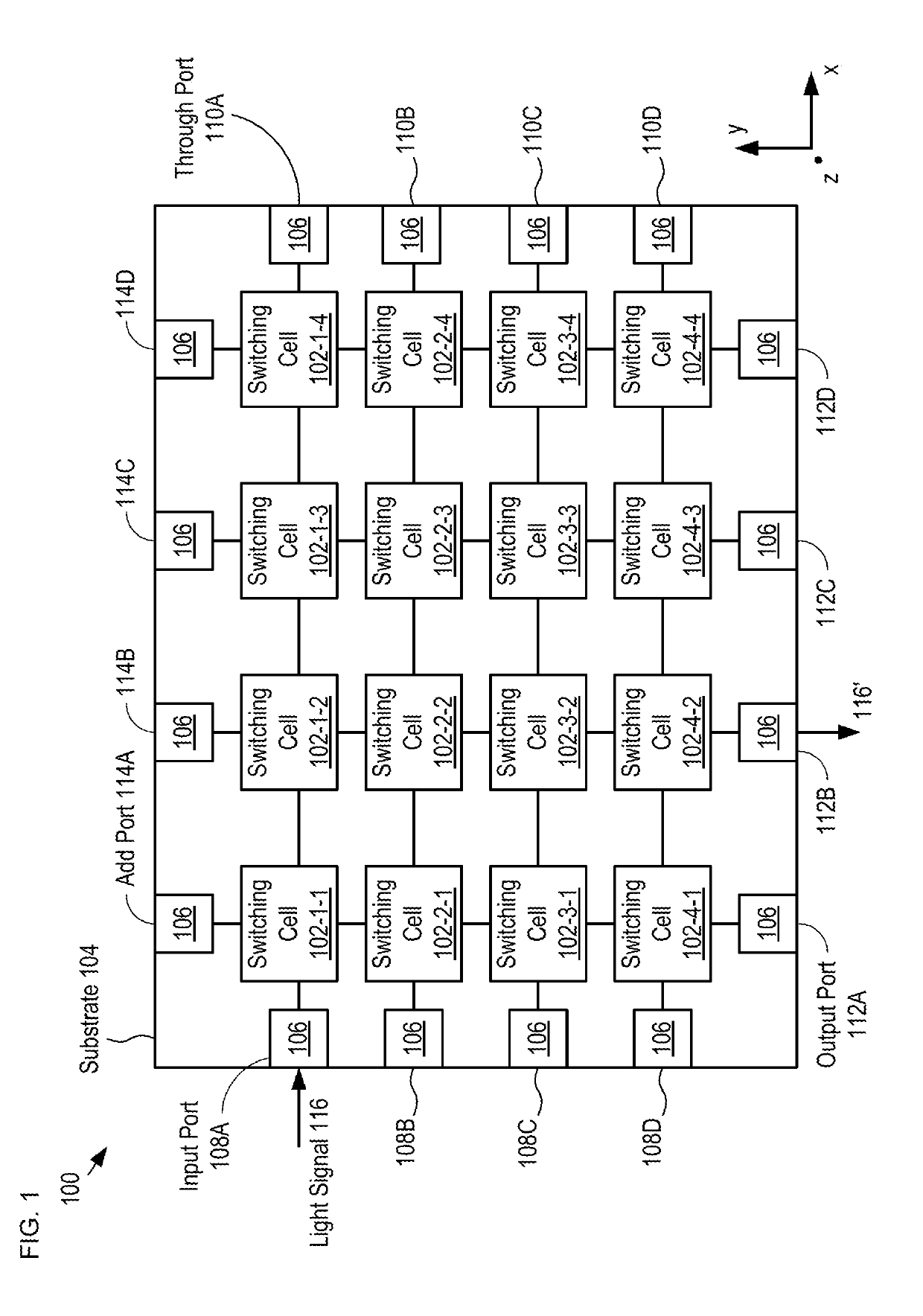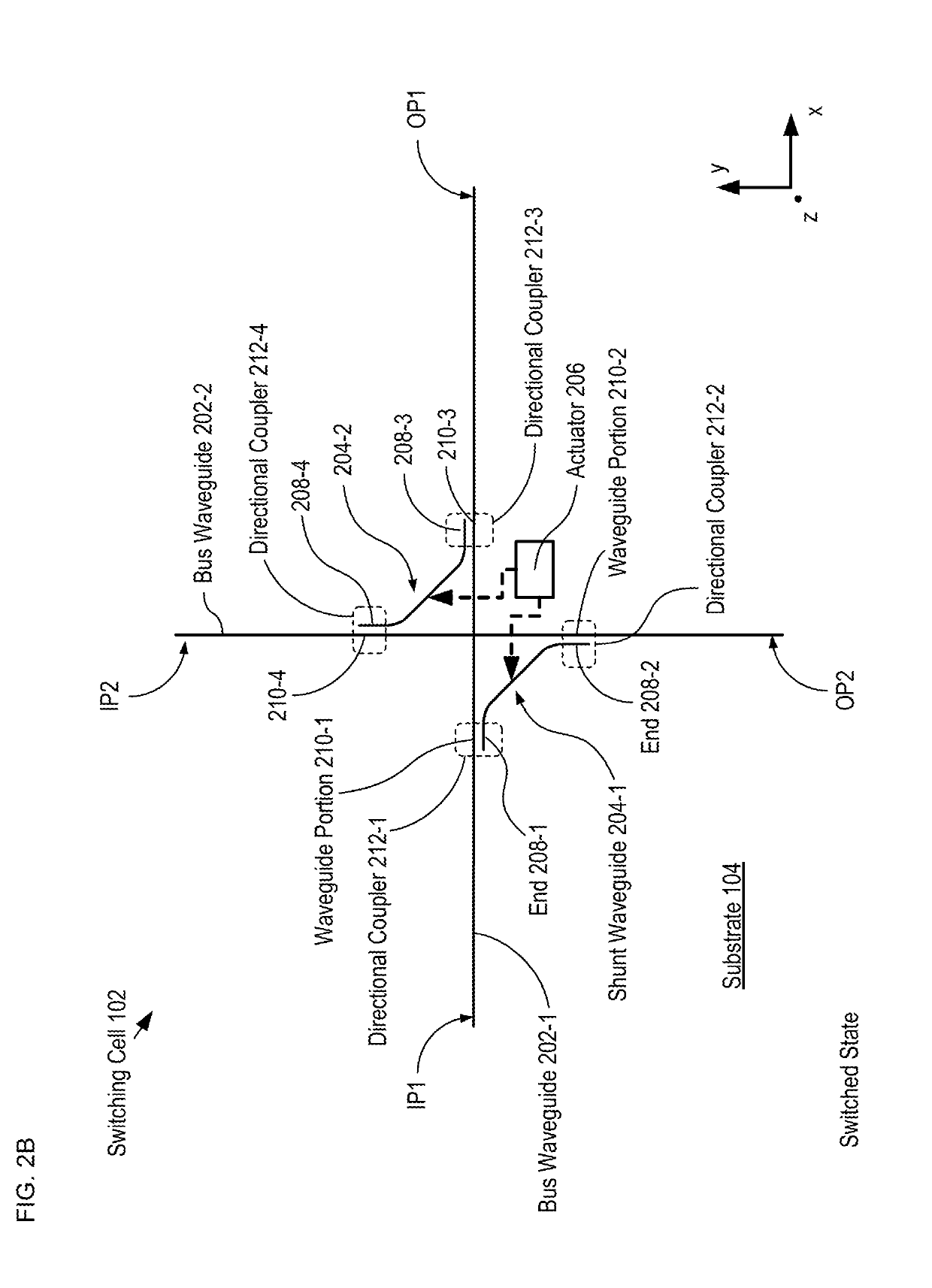Silicon-photonics-based optical switch with low polarization sensitivity
- Summary
- Abstract
- Description
- Claims
- Application Information
AI Technical Summary
Benefits of technology
Problems solved by technology
Method used
Image
Examples
Embodiment Construction
[0046]FIG. 1 depicts a schematic drawing of an optical switching system in accordance with an illustrative embodiment of the present invention. System 100 is an optical cross-connect that includes a 4×4 array of switching-cells 102-1-1 through 102-4-4, each of which is disposed on substrate 104. It should be noted that, although the depicted example comprises three rows and four columns of switching cells, any practical number of rows and / or columns of switching cells can be included in system 100 without departing from the scope of the present invention.
[0047]Each of switching cells 102-1-1 through 102-4-4 (referred to, collectively, as cells 102) is a 2×2 crossbar switch that includes a pair of sub-micron-width bus waveguides and a pair of movable shunt waveguides, whose positions determine the connectivity of the inputs and outputs of the switching cell.
[0048]It is an aspect of the present invention that the silicon-photonic waveguides used in the switching cells of its different...
PUM
 Login to View More
Login to View More Abstract
Description
Claims
Application Information
 Login to View More
Login to View More - R&D
- Intellectual Property
- Life Sciences
- Materials
- Tech Scout
- Unparalleled Data Quality
- Higher Quality Content
- 60% Fewer Hallucinations
Browse by: Latest US Patents, China's latest patents, Technical Efficacy Thesaurus, Application Domain, Technology Topic, Popular Technical Reports.
© 2025 PatSnap. All rights reserved.Legal|Privacy policy|Modern Slavery Act Transparency Statement|Sitemap|About US| Contact US: help@patsnap.com



